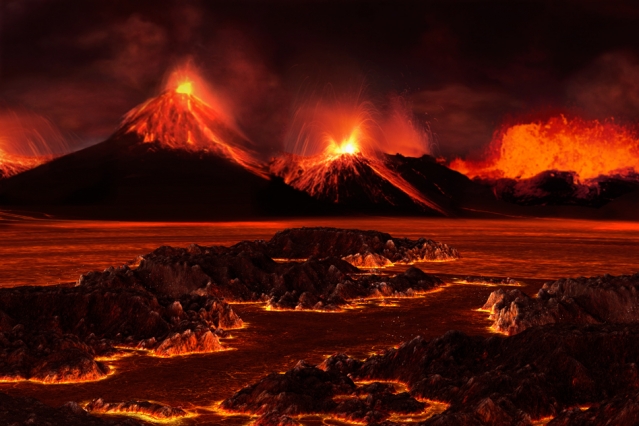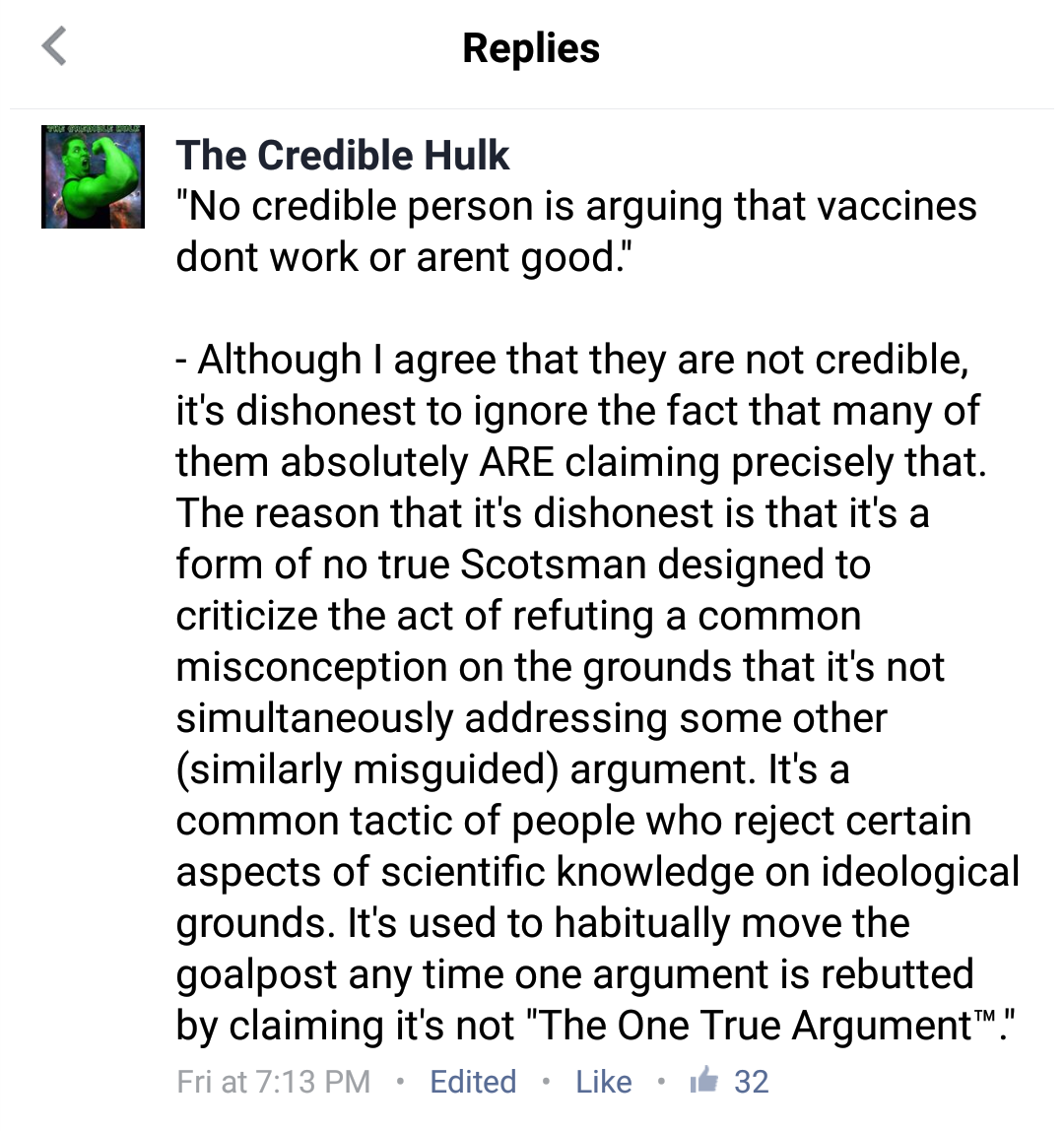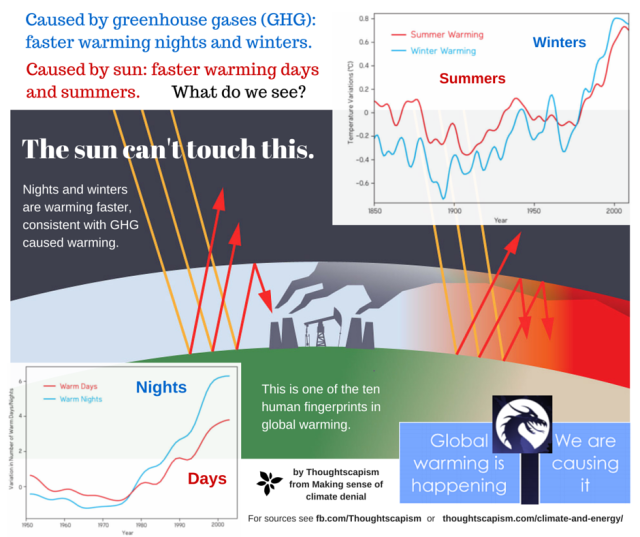Volcanic eruptions can have both short-term and long term effects on Earth’s climate. In the short term, they release large quantities of ash and sulfur dioxide (SO2) into the stratosphere, which quickly gets blown all around the globe. The sulfur dioxide subsequently reacts to form droplets of sulfuric acid (H2SO4), which then condense into fine aerosols. These aerosols reflect sunlight back into space, thereby cooling the troposphere below. These effects can last for 1 – 3 years. In the long term, they can increase atmospheric concentrations of CO2 which can lead to global warming via the greenhouse effect over long periods of heightened volcanic activity
For years it was thought that the volcanic ash was primarily responsible for cooling effects by blocking sunlight. However, it was later discovered that its effects are short-lived, and that the total amount of sulfur-rich gases released in an eruption was a more important determinant of an eruption’s global cooling effects.

Cooling from Volcanic Sulfide Aerosols (source).
In rare cases of exceptionally large “Super Volcano” eruptions, there is evidence that the ash can contribute significantly to climate change – largely through changes in the surface albedo of the affected area, but these are estimated to occur only about once every 50,000 years on average. It’s worth noting however that eruptions of that magnitude still occur roughly twice as frequently as asteroid, comet, or meteoroid impacts with comparable climate effects (diameter ≥1 km). The Toba eruption of about 74,000 years ago in Sumatra, Indonesia was perhaps the greatest Super Volcano eruption of human pre-history. Some estimates posit that its initial 3 – 5 degree Celsius cooling effect may have triggered the first couple of centuries of a nearly 1,000 year cooling period. There is even a hypothesis that the Toba eruption may have been largely responsible for an apparent genetic bottleneck in human evolution around that time, but other research disputes the extent to which Toba could have been to blame for that.
Eruptions are rated on a scale called the Volcanic Explosivity Index (VEI) from 0 – 8 based on the resultant volume of ash and debris (tephra) and cloud height, as well as on subsequent developments of this index based on the mass of magma from an eruption (magnitude). Scales based the rate of mass ejection (intensity), and the area covered by lava (destructiveness). All of these are logarithmic scales (pg. 263 – 269).
Particularly explosive eruptions with high levels of halogen emissions may also exacerbate ozone depletion, possibly via interactions with human emitted Chlorofluorocarbons (CFCs).
How?
Take for instance the following reaction of chlorine and ozone:
CFCl3 + UV photon ==> CFCl2 + Cl
Cl + O3 ==> ClO + O2
ClO + O ==> Cl + O2
This leaves another chlorine atom free to react with another ozone molecule
Cl + O3 ==> ClO + O2
ClO + O ==> Cl + O2
And so on and so forth. This can occur thousands of times.
Stratospheric ozone protects life on earth from damage from harmful UV radiation.
Although possible mechanisms have been proposed by which ozone depletion might indirectly affect the climate by suppressing terrestrial carbon sinks in the carbon cycle, its effects on the climate are not well understood, and usually take a back seat to concerns over the deleterious effects of the resultant influx of UV radiation on human, plant and animal health. Although subordinate to CFCs emitted by humans, volcanoes can have some effect on the ozone too.
In the long term, extended periods of heightened volcanic activity can also result in warming via the greenhouse effect. For instance, about a million years of severe volcanism spanned the Permian-Triassic boundary in what is referred to as the Siberian Traps. This released large quantities of CO2 and methane into the atmosphere and led to significant warming about 250 million years ago (albeit likely preceded with short term cooling effects from the aforementioned sulfate aerosols). These were flood basalt eruptions in which ferromagnetic lava of relatively low viscosity covered as much as 1.3*10^6 km^2 in Northern Pangea.

Artist’s rendering of the landscape during end-Permian extinction. Image: Jose-Luis Olivares/MIT
This is suspected to have been a major contributing factor to the worst mass extinction in Earth’s history: The End Permian Extinction: known colloquially as The Great Dying. The End Permian event is estimated to have included the extinction of up to 96% of marine species and 70% of terrestrial vertebrates (though estimates vary).
I should mention that volcanism and subsequent warming via the greenhouse effect were likely not the sole determinants of the Permian extinction event: there is also evidence that these events triggered the eruption and burning of coal deposits, and of possibly one or more asteroid (or large comet) impacts, and possibly even a contribution from a methane producing genus of archaea.
However, tremendous volcanism and global warming almost certainly played key roles in the End Permian extinction as well. As the authors of this study put it:
“When the end-Permian extinction is compared with other short-lived events such as the end-Triassic and end-Cretaceous extinctions and the PETM, we see in common, a short-lived perturbation of the carbon cycle followed by a rise in atmospheric pCO2 and temperature, evidence for ocean acidification, anoxia, and rapid extinction (10s of thousands of years) (48, 56, 57).”
In my articles on plate tectonics and continental drift (here and here), I used the Rodinia Supercontinent and Snowball Earth hypothesis as an example of how continental drift could dramatically affect climate. I did not, however, discuss how that extreme glaciation is thought to have come to an end. Well, models suggest that atmospheric greenhouse gas concentrations would have needed to get extremely high to break out of such a glaciation. Global glaciation would entail that that the carbonate and silicate rock weathering reactions (which I discussed in the continental drift articles) would not have been able to sequester atmospheric CO2, so CO2 from volcanic eruptions should have been allowed to accumulate unmitigated in the atmosphere over millions of years, which could explain how the Earth warmed enough to end the glaciation period.
Knowing this, it’s not unreasonable to wonder whether GHG emissions from volcanoes could be contributing to current global warming. However, we track volcanic activity closely, and it turns out that volcanic CO2 contributions since 1750 have been at least 100 times smaller than the contributions by human’s burning fossil fuels. This fact runs contrary to the common climate myth that states that a single volcanic eruption releases more CO2 than humans have emitted throughout all of history. The myth attempts to portray anthropogenic contributions as a drop in the bucket compared to volcanic CO2 emissions. In actuality, the opposite is the case. If anything, volcanic activity may have even slowed down warming from 2008 – 2011 via sulfuric acid aerosol forcing.
References:
Algeo, T. J., Hannigan, R., Rowe, H., Brookfield, M., Baud, A., Krystyn, L., & Ellwood, B. B. (2007). Sequencing events across the Permian–Triassic boundary, Guryul Ravine (Kashmir, India). Palaeogeography, Palaeoclimatology, Palaeoecology, 252(1), 328-346.
Andersson, S. M., Martinsson, B. G., Vernier, J. P., Friberg, J., Brenninkmeijer, C. A., Hermann, M., … & Zahn, A. (2015). Significant radiative impact of volcanic aerosol in the lowermost stratosphere. Nature communications, 6.
Becker, L., Poreda, R. J., Hunt, A. G., Bunch, T. E., & Rampino, M. (2001). Impact event at the Permian-Triassic boundary: Evidence from extraterrestrial noble gases in fullerenes. Science, 291(5508), 1530-1533.
Blackburn, T. J., Olsen, P. E., Bowring, S. A., McLean, N. M., Kent, D. V., Puffer, J., … & Et-Touhami, M. (2013). Zircon U-Pb geochronology links the end-Triassic extinction with the Central Atlantic Magmatic Province. Science,340(6135), 941-945.
Burgess, S. D., Bowring, S., & Shen, S. Z. (2014). High-precision timeline for Earth’s most severe extinction. Proceedings of the National Academy of Sciences, 111(9), 3316-3321.
Cadoux, A., Scaillet, B., Bekki, S., Oppenheimer, C., & Druitt, T. H. (2015). Stratospheric Ozone destruction by the Bronze-Age Minoan eruption (Santorini Volcano, Greece). Scientific reports, 5.
Cline, W. R. (1991). Scientific basis for the greenhouse effect. The Economic Journal, 101(407), 904-919.
Erwin, D.H., Bowring, S.A.. and Yugan, J., 2002, End-Permian mass extinctions: A review, in Koeberl. C., and MacLeod, K.G., eds., Catastrophic Events and Mass Extinctions: Impacts and Beyond: Boulder, Colorado, Geological Society of America Special Paper 356. P. 363 – 383.
Gerlach, T. (2011). Volcanic versus anthropogenic carbon dioxide. Eos,92(24), 201-208.
Jones, M. T., Sparks, R. S. J., & Valdes, P. J. (2007). The climatic impact of supervolcanic ash blankets. Climate Dynamics, 29(6), 553-564.
Kutterolf, S., Hansteen, T. H., Appel, K., Freundt, A., Krüger, K., Perez, W., & Wehrmann, H. (2013). Combined bromine and chlorine release from large explosive volcanic eruptions: A threat to stratospheric ozone?. Geology,41(6), 707-710.
Lane, C. S., Chorn, B. T., & Johnson, T. C. (2013). Ash from the Toba supereruption in Lake Malawi shows no volcanic winter in East Africa at 75 ka. Proceedings of the National Academy of Sciences, 110(20), 8025-8029.
Molina, M. J., & Rowland, F. S. (1974). Stratospheric sink for chlorofluoromethanes: chlorine atom-catalysed destruction of ozone. Nature,249(28), 810-812.
Newhall, C. G., & Self, S. (1982). The volcanic explosivity index (VEI) an estimate of explosive magnitude for historical volcanism. Journal of Geophysical Research: Oceans, 87(C2), 1231-1238.
Ogden, D. E., & Sleep, N. H. (2012). Explosive eruption of coal and basalt and the end-Permian mass extinction. Proceedings of the National Academy of Sciences, 109(1), 59-62.
Pierrehumbert, R. T. (2004). High levels of atmospheric carbon dioxide necessary for the termination of global glaciation. Nature, 429(6992), 646-649.
Pyle, D. M. (1995). Mass and energy budgets of explosive volcanic eruptions.Geophysical Research Letters, 22(5), 563-566.
Rampino, M. R., & Self, S. (1993). Bottleneck in human evolution and the Toba eruption. Science, 262(5142), 1955-1955.
Rampino, M. R., & Self, S. (1993). Climate-volcanism feedback and the Toba eruption of∼ 74,000 years ago. Quaternary Research, 40(3), 269-280.
Rampino, M. R. (2002). Supereruptions as a threat to civilizations on Earth-like planets. Icarus, 156(2), 562-569.
Renne, P. R., Zichao, Z., Richards, M. A., Black, M. T., & Basu, A. R. (1995). Synchrony and causal relations between Permian-Triassic boundary crises and Siberian flood volcanism. Science, 269(5229), 1413.
Renne, P. R., & Basu, A. R. (1991). Rapid eruption of the Siberian Traps flood basalts at the Permo-Triassic boundary. Science, 253(5016), 176-179.
Rothman, D. H., Fournier, G. P., French, K. L., Alm, E. J., Boyle, E. A., Cao, C., & Summons, R. E. (2014). Methanogenic burst in the end-Permian carbon cycle. Proceedings of the National Academy of Sciences, 111(15), 5462-5467.
Schulte, P., Alegret, L., Arenillas, I., Arz, J. A., Barton, P. J., Bown, P. R., … & Collins, G. S. (2010). The Chicxulub asteroid impact and mass extinction at the Cretaceous-Paleogene boundary. Science, 327(5970), 1214-1218.
Self, S. (2005) ‘Effects of volcanic eruptions on the atmosphere and climate’, in Marti, J. and Ernst, G.G.J. (eds.) Volcanoes and the Environment:. Cambridge: Cambridge University Press, pp. 152–174.
Sigurdsson, H. (1990). Assessment of the atmospheric impact of volcanic eruptions. Geological Society of America Special Papers, 247, 99-110.
Sigurdsson, H. (2000). Encyclopedia of volcanoes. San Diego: Academic Press.
Sitch, S., Cox, P. M., Collins, W. J., & Huntingford, C. (2007). Indirect radiative forcing of climate change through ozone effects on the land-carbon sink. Nature, 448(7155), 791-794.
Sun, Y., Joachimski, M. M., Wignall, P. B., Yan, C., Chen, Y., Jiang, H., … & Lai, X. (2012). Lethally hot temperatures during the Early Triassic greenhouse. Science, 338(6105), 366-370.
Svensen, H., Planke, S., Polozov, A. G., Schmidbauer, N., Corfu, F., Podladchikov, Y. Y., & Jamtveit, B. (2009). Siberian gas venting and the end-Permian environmental crisis. Earth and Planetary Science Letters, 277(3), 490-500.
Vernier, J. P., Thomason, L. W., Pommereau, J. P., Bourassa, A., Pelon, J., Garnier, A., … & Vargas, F. (2011). Major influence of tropical volcanic eruptions on the stratospheric aerosol layer during the last decade.Geophysical Research Letters, 38(12).
Ward, P. D., Montgomery, D. R., & Smith, R. (2000). Altered river morphology in South Africa related to the Permian-Triassic extinction. Science,289(5485), 1740-1743.
Zachos, J. C., Dickens, G. R., & Zeebe, R. E. (2008). An early Cenozoic perspective on greenhouse warming and carbon-cycle dynamics. Nature,451(7176), 279-283.
Zielinski, G. A., Mayewski, P. A., Meeker, L. D., Whitlow, S., Twickler, M. S., & Taylor, K. (1996). Potential atmospheric impact of the Toba Mega‐Eruption∼ 71,000 years ago. Geophysical Research Letters, 23(8), 837.



4 Comments
Justin Perry · February 14, 2017 at 1:41 am
Dear Credible Hulk,
What’s your take on Tom Bradys disapproval of the nightshade family, non-gmo foods,everything organic, and no heavy lifting with weights ? I’m thinking that cat is using HGH but all the Pats fans say no way not Tom.
Credible Hulk · April 30, 2017 at 2:43 am
My take is that he may be a great person to emulate when learning to throw a football better, but not so much when studying scientific topics.
The Sun and Earth’s Climate: The Solar Cycle and the Maunder Minimum – The Credible Hulk · January 9, 2017 at 12:15 pm
[…] The Climatological effects of Volcanic Eruptions: The End Permian Extinction, the Toba Super-Volcano… […]
The Structure and Properties of the Sun – The Credible Hulk · January 11, 2017 at 11:37 pm
[…] The Climatological effects of Volcanic Eruptions: The End Permian Extinction, the Toba Super-Volcano… […]
Comments are closed.